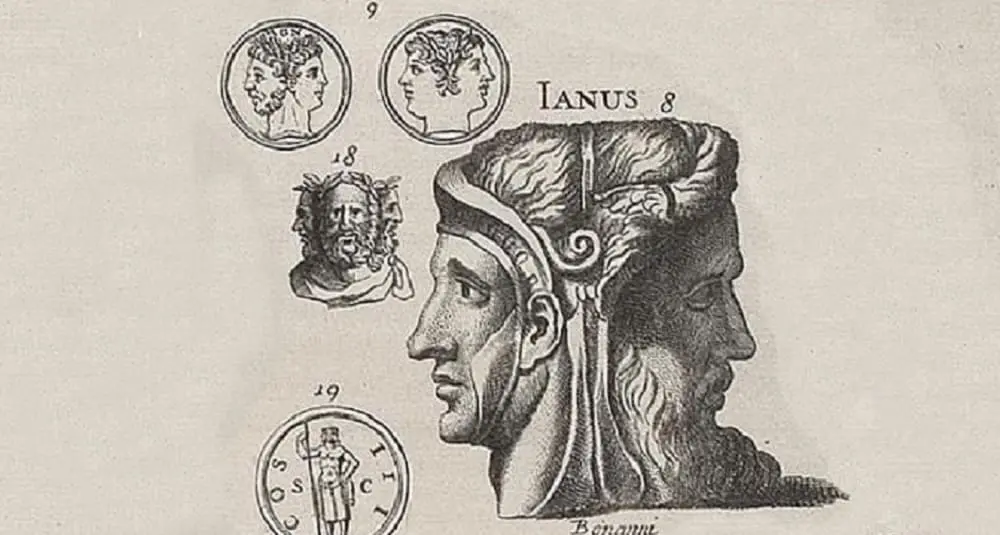What does Janus symbolize?
Last Updated:
In Roman mythology, Janus is the god of beginnings, ends, gates, passages and time. He is a unique figure in the Roman pantheon, with no direct equivalent in Greek mythology. His symbolic role is fundamental to the Roman concept of change and renewal. He is often depicted with two faces, one looking to the past, the other to the future, illustrating his ability to see in both directions of time.
Janus embodies all forms of transition: from one place to another, from one state to another, from one period to another. He is the guardian of doors (janua in Latin) and thresholds, both literally and figuratively. Whenever change occurs, Janus is invoked. In particular, he is associated with the cycles of life, the seasons, and the beginnings and endings of events.
This is why the month of January (Januarius in Latin) is dedicated to him: it marks the beginning of a new year, a moment of passage when we look both at what has been accomplished and at what is yet to come.
Unlike most Roman gods, Janus has no direct Greek equivalent. He is considered one of Rome’s oldest and most venerated divinities. His cult dates back to royal times and continued throughout Roman history. He was often invoked first during prayers or religious ceremonies, as every ritual opening passed through him.
He had his own temple in Rome, the Janus Geminus, a two-door building in the Forum. These gates were closed in times of peace and open in times of war, making Janus a symbol of the state of Rome.
Janus’ two faces are undoubtedly his most famous attribute. They express the duality of his power: past and future, exit and entrance, light and darkness. By extension, he is also the god of choices, of crossroads, of moments when several directions are possible.
This duality also makes him the protector of homes, where entrance doors mark the boundary between the inner world (the family) and the outer world (the public). As such, Janus is also linked to the notion of protection, guaranteeing the safety of the places he watches over.
While Saturn symbolizes cyclical time, Janus represents linear time, that of passage, progression and change. He is associated with the idea of renewal, with each end heralding a new beginning. The Romans made offerings to him at the beginning of each month, and particularly at New Year’s, to ensure a smooth transition to the new period.
His role thus goes far beyond the simple spatial realm (gates and passages) to touch on profound philosophical and temporal concepts, such as memory, anticipation and awareness of the passage of time.
Janus symbolizes beginnings and ends, transitions and the passage of time, as well as the duality of past and future. A god with two faces, he watches over thresholds, crossroads, decisions, open and closed doors. His representation embodies the wisdom of hindsight and foresight, making him an essential figure in Roman symbolism. Janus embodies change, as guardian, guide and witness to the stages of human life and the course of history.
You may also be interested in
history

What does Janus symbolize?
Answer
In Roman mythology, Janus symbolizes beginnings, endings, the passage of time and transitions, with his two faces turned towards the past and the future.